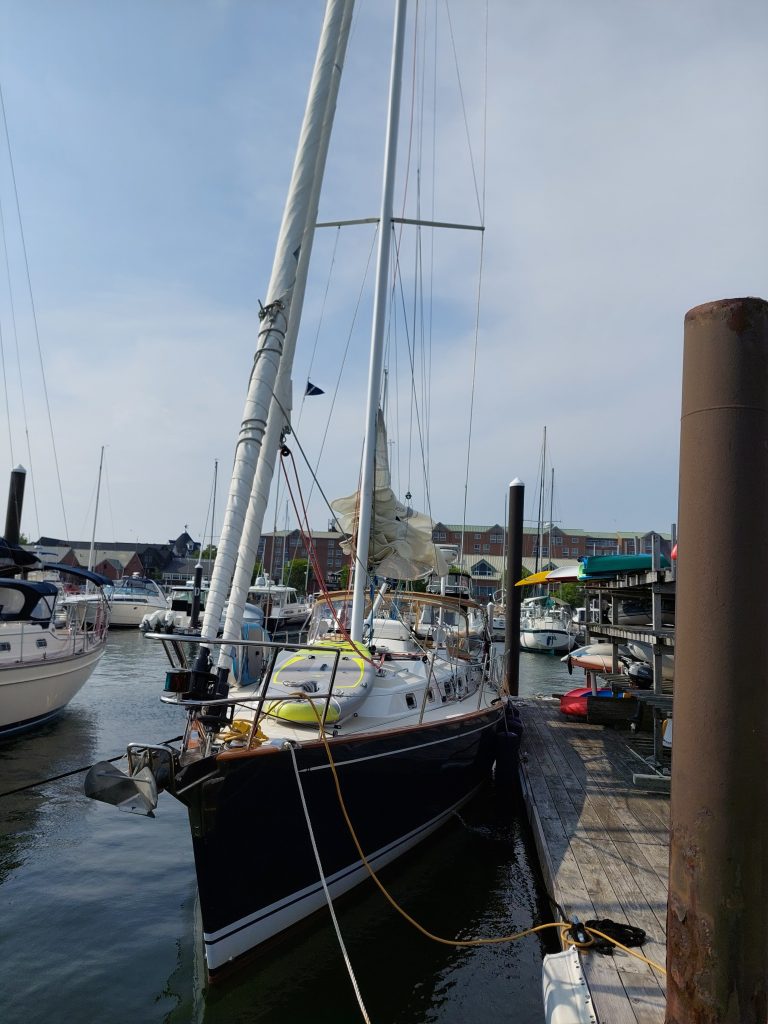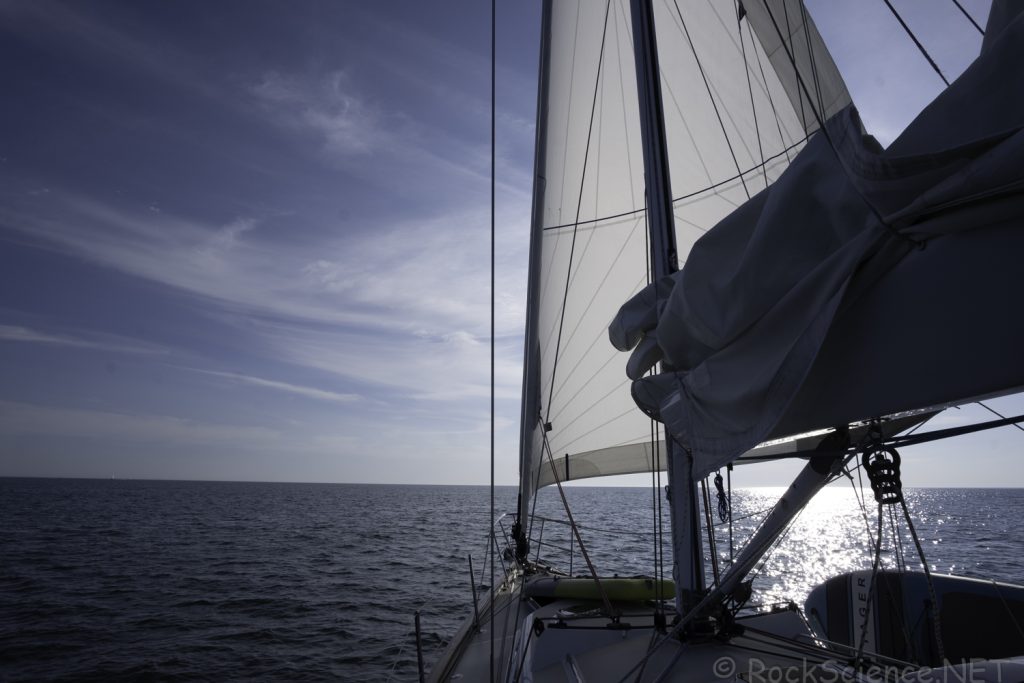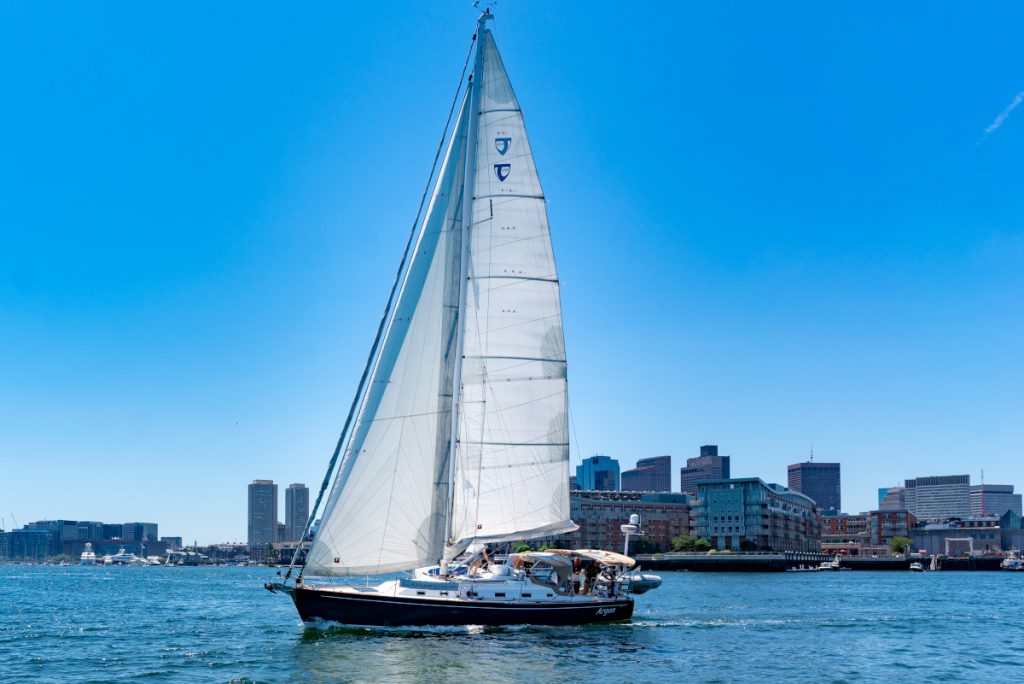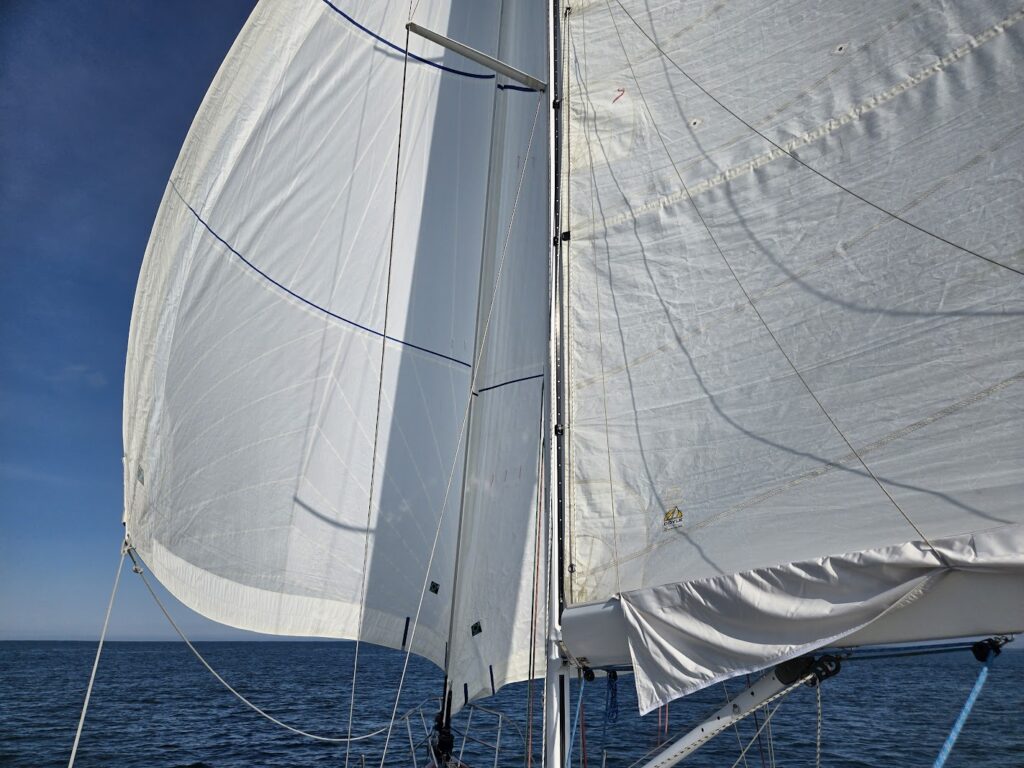What to know before you go!
At All Hands Sailing, we welcome everyone aboard—whether you’ve never set foot on a sailboat or you’ve spent years on the water. You don’t need any experience to enjoy a charter, but a little knowledge can make your time on Argon even more rewarding.
Here’s a friendly introduction to how sailboats work, what the sailing terms mean, and what you can expect when you join us on the water.
The Boat and Its Parts
- Hull – The body of the boat that floats on the water.
- Mast – The tall vertical pole that holds the sails.
- Boom – The horizontal pole attached to the bottom of the mainsail.
- Sails – the mainsail and the headsails. These capture the wind.
- Cockpit – Where you sit, steer, and relax.
- Rudder – Used to steer the boat (on Argon, via a wheel – or helm).
- Keel – A fixed, weighted fin beneath the hull that provides balance and helps the boat sail straight.




Sailing Lingo (Just the Basics)
Here are a few terms you might hear onboard:
- Port / Starboard – Left / right (when facing forward).
- Bow / Stern – Front / back of the boat.
- Heeling – The boat leaning to one side under wind. It’s normal—and often fun!
- Tacking / Jibing – Turning the boat through the wind to change direction.
- Lines – All ropes on a boat are called lines. Lines are made of rope
- Sheets – Lines specifically for controlling the shape of the sail
- Halyards – Lines specifically for raising or lowering a sail.
- Head Up – Turn the boat closer to the wind (more upwind)
- Fall Off – Turn the boat away from the wind (more downwind)

How Wind Moves a Sailboat
Sailboats don’t just drift—they use lift (like airplane wings) to move forward, even upwind. The sails are shaped and angled to redirect airflow and generate this lift. We carefully shape the sails to match the angle we are sailing to the wind to maximize this lift. The underwater surfaces (keel and rudder) balance this lift and keep the boat moving forward.
We refer to the boat’s direction relative to the wind as the point of sail:
- Close Hauled – Sailing as close to the wind as possible.
- Beam Reach – Wind from the side—fast, smooth, and comfortable.
- Broad Reach – Wind behind and to the side—great for cruising.
- Running – Wind straight from behind.


Argon sailing Close Hauled (L) and Running (R)
What It Feels Like
When you’re on Argon, you’ll feel the boat respond to wind and water. Expect:
- A gentle side-to-side motion (or more dramatic when we want speed).
- The hum of water and the quiet force of wind doing the work.
- A surprisingly calm feeling in the cockpit, even when sails are full and powerful.
We tailor every sail to conditions and guest comfort. Whether you want to lounge with a drink or try your hand at the helm, you’ll feel safe and part of the rhythm of the sea.
Keel vs. Centerboard: What Keeps Us Upright?
One question we sometimes get is: How does the boat stay upright?
Sailboats stay stable thanks to underwater structures that counterbalance the force of the wind on the sails:
- Centerboard boats have a retractable blade that helps reduce sideways drift. These are common on small, shallow-water boats.
- Keelboats, like Argon, have a heavy, fixed fin under the hull. The keel provides incredible stability and prevents capsizing, even when the boat heels.

Here is a drawing of Argon’s full sail plan showing the mast, boom, hull, keel and rudder
Because Argon is a modern keelboat, she handles wind and waves beautifully—even when sailing with a bit of dramatic flair. The deep keel also contributes to her ability to sail upwind efficiently.
Wind and Sea Conditions
We monitor the weather closely and plan our sails to match conditions. A few things to know:
- Wind Speed – 8–15 knots is ideal. That’s plenty to move us along without too much heel. Fun fact about the wind is that when the wind speed doubles, the boat actually feels four times the power. Modern sailboats are designed to work over a large range of power from the wind – they need to be able to move in very light air and tolerate very strong winds.
- Sea State – Calm to moderate waves (under 2–3 feet) make for a smooth ride. We adjust our course and sail trim to keep things comfortable. Narragansett Bay is normally relatively flat since it is protected on all sides.
If weather conditions aren’t ideal, we’ll find a sheltered route or reschedule—your comfort and safety always come first.
Let’s Go Sailing
There’s nothing quite like the feeling of wind in the sails and water rushing beneath the hull. Whether you’re joining us to relax, celebrate, or explore, we’re here to make your time on the water safe, comfortable, and unforgettable.
